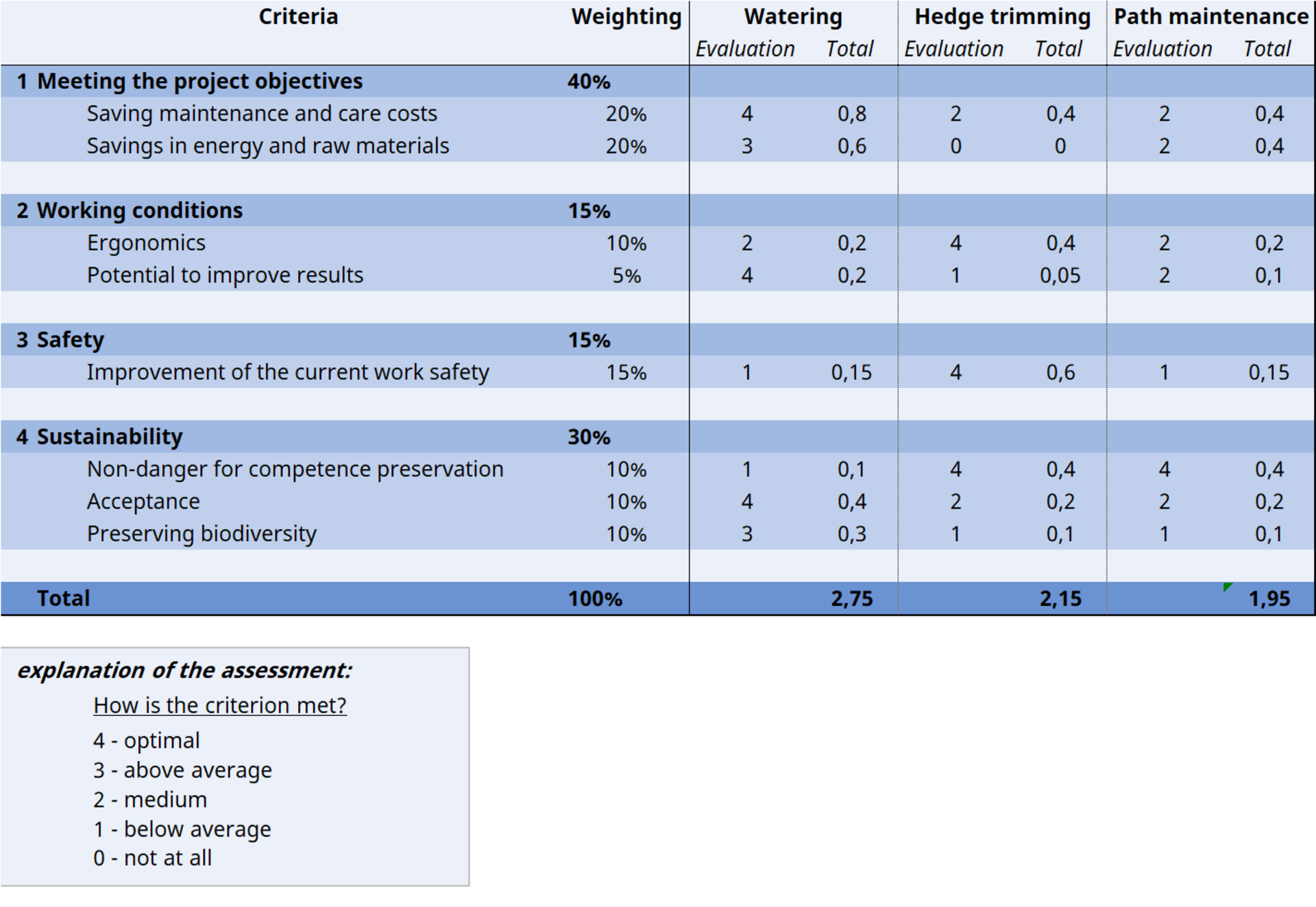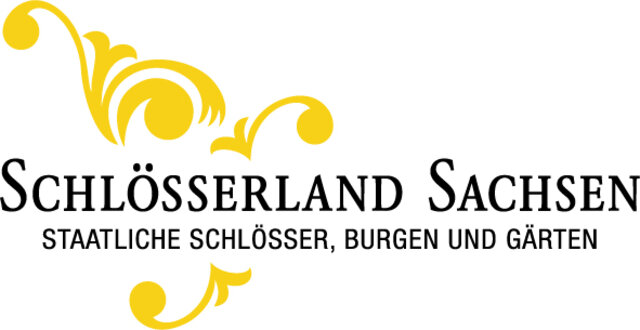Watering Robot or Root Cutting Robot?

The project "Climate Change in Historic Gardens" aims at supporting the gardeners by automated processes. In this way, their time and energy can be used for activities that due to climate change require additional work, such as the care of woods. There were several approaches to implementing this task. A semi-autonomous robot was expected to perform repetitive tasks that take a lot of time and are physically demanding. However, there are many tasks like these, and the question arose: Where can the robot provide the optimal support?
The options were hedge trimming of the old beech hedges, the maintenance of paths, and the watering of the potted plants in the Pillnitz Palace Park. Due to the financial and time limitations of the project, it was not possible to solve all three tasks at the same time. Therefore, we had to decide on one task. For this purpose, we carried out a potential analysis. Data collected on the requirements of an automated solution were used to determine which of the three tasks had the highest potential and thus the greatest benefit for the gardeners.
Selection of Criteria
In order to carry out such a potential analysis successfully, the selection of the criteria and their weighting are decisive.
The main criteria according to which the decision should be made were determined and evaluated together with the colleagues of the Staatliche Schlösser, Burgen und Gärten Sachsen gGmbH:
The first criterion was the fulfillment of the project goals: To make the physically demanding activities easier through automation technology in order to manage the existing increased workload through technical support. In the design of the robot, special consideration was to be given to the reduction of climate-damaging emissions and sustainability, which received the highest weighting of 40 percent. The objectives of the project were clearly defined, and their funding was secured by the project sponsor. It had to be ensured that the outcome of the project was in line with the intended goals.
Two further sub-objectives were to improve the working conditions of the gardeners and at the same time to increase current occupational safety. The two goals were included in the potential analysis as criteria with a total of 30 percent. The evaluation was based on the results of interviews with the professional gardening staff.
The criterion of social and environmental sustainability also received a weighting of 30 percent, since the overall goal of the project relates to improvements and adaptation of the gardens to climate change.
In the following, the individual criteria are evaluated and explained per task.
Evaluation Matrix

Evaluation
1a) Cost savings in maintenance and upkeep refers to person-months saved by replacing repetitive tasks.
- Watering: Two time-consuming daily tasks, i.e., hose pulling and manual watering, are no longer needed.
- Hedge trimming: Measuring the hedge twice a year for two weeks is eliminated.
- Path maintenance: Edge trimming and path cleanup are eliminated. Both are tasks that are done at long intervals from each other.
Result: Watering showed the highest potential here.
1b) Savings in energy and raw materials: Comparison between current status and future technology.
- Watering: Diesel vehicles are replaced. Watering is done at more advantageous times.
- Hedge trimming: No labor can be replaced. Perhaps even more material needs to be brought in, compared to a battery hedge trimmer.
- Path maintenance: Diesel vehicles can be compensated.
Result: Again, the watering rated best.
2a. Ergonomics refers to the improvement of physical workload.
- Watering: The laying out and pulling of hoses is replaced.
- Hedge trimming: Lifting and holding shears, setting up and climbing on scaffolding is eliminated.
- Path maintenance: Kneeling work is eliminated at this point.
Result: For this criterion, automating hedge trimming offered the greatest improvement.
2b. Potential of result improvement considers the final result with and without automation.
- Watering: Plant condition is improved with more accurate water delivery, data support, and night watering.
- Hedge trimming: Little result improvement is achieved except for horizontal trimming on the hedge.
- Path maintenance: Since this work is mostly done by unskilled workers, automation leads to more consistent results.
Result: Automation of watering showed the greatest potential.
3a. Improvement of the current work safety
- Watering: Little improvement can be made as the work processes are already very safe. Nonetheless, hoses are a potential tripping hazard.
- Hedge trimming: There is no longer a need to work with pruning tools on scaffolding.
- Path maintenance: Handling chemicals or hot steam is no longer necessary.
Result: Use in hedge cutting offers the greatest advantage here.
4a. Competence retention: Is competence irretrievably lost due to automation?
- Watering: Know-how regarding plant care can be lost.
- Hedge trimming: No know-how is lost.
- Path maintenance: No know-how is lost.
Result: Hedge trimming and path maintenance offer the least risk of losing important expertise.
4b. Acceptance among gardeners and visitors
- Watering: The implementation of automated watering is the most understandable in terms of climate change. Also, the process does not seem threatening or disturbing in volume.
- Hedge trimming: A robot with sharp cutting tools and the direct potential to harm woody plants or animals lowers the acceptance.
- Path maintenance: Sharp cutting tools are also used here, which could be classified as dangerous and be rejected.
Result: As the first automated process, a watering robot promises the greatest acceptance.
4c. Is biodiversity maintained and perhaps even improved despite automation?
- Watering: There is no negative interference with nature.
- Hedge trimming: The volume and careless trimming can have negative effects.
- Path maintenance: There can be a negative effect due to noisiness.
Result: Automated watering is the only process that is not expected to have a negative effect on biodiversity.
Summary
In conclusion, we found that the greatest potential lies in watering.
The main points here are:
- Compliance with the project objectives
- Improvement of the result
- Acceptance
Nonetheless, hedge trimming and path maintenance also have a high potential for improving the working conditions of the gardeners and adapting the gardens to climate change, and should be pursued in further projects.



